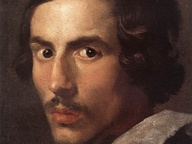Wael Shawky

From 3 November 2016 to 5 February 2017
Rivoli | Turin
Place: Castello di Rivoli – Museo d'Arte Contemporanea
Address: piazzale Mafalda di Savoia
Times: Tuesday to Friday 10 a.m.- 5 p.m. Saturday and Sunday 10 a.m.- 7 p.m December 24 and 31, 10 a.m. 5 p.m. Closed Monday, open Easter Monday, closed January 1, May 1, and December 25 The Ticket office closes 15 minutes before the closure of the Museum
Responsibles: Carolyn Christov-Bakargiev, Marcella Beccaria
Organizers:
- Regione Piemonte
- Città di Torino
- Città di Rivoli
- Fondazione CRT
- Unicredit
Ticket price: Unique Regular admission: euro 6.50 Reductions for children aged 11-14, senior citizens, teachers, students, military personnel, cultural associations and other organizations, Pyou Card holders. Free admission to children under 11 and for the disabled
Telefono per informazioni: +39 011 9565222
Official site: http://www.castellodirivoli.org
The retrospective of Wael Shawky (Alexandria, Egypt, 1971), held at the Castello di Rivoli, presents a series of film works, sculptures, and new wooden high-reliefs inspired by the Crusades and narrated from an Arab rather than a European point of view.
The artist transforms the space of the Manica Lunga, whose walls have been painted blue, into a spectacular stage design. The exhibition itinerary starts with the new wooden reliefs, and then unfolds across a construction inside of which Cabaret Crusades: The Horror Show File (2010) is screened, to continue with a garden with twenty-six sculptures on display. Another construction that calls to mind a minaret hosts Cabaret Crusades: The Path to Cairo (2012). The exhibition continues with a series of photographs of marionettes and ends with the third video in the trilogy, The Secrets of Karbala (2015). “Visitors – writes Marcella Beccaria – are swept off into the distant past, the echoes of which are nonetheless recognizable in our unstable present of Middle Eastern wars and new uncertainties.”
Inspired by Medieval Islamic sources like Usama Ibn Munqidh and Ibn al-Qalànisi—as well as The Crusades through Arab Eyes (1983) by the Lebanese historian Amin Maalouf—Cabaret Crusades lingers upon the history of the Church’s military campaigns in the Holy Land. The artist begins his story with the first Crusades, from 1096 to 1099, staged in the first chapter of the Cabaret Crusades: The Horror Show File. It then continues with the history of the events between the First and Second Crusade, covering the years between 1099 and 1145, represented in Cabaret Crusades: The Path to Cairo. These works bypass the more traditional notions regarding the clash of civilizations between the Western world and Islamic cultures. The use of marionettes instead of real actors allows the trilogy to be magical in tone and seemingly different from the violent and macabre subject described. Shawky used antique marionettes of the eighteenth century from the Lupi Collection in Turin for the first film and custom-made ceramic ones for the second work.
The Secrets of Karbala is the final chapter in the trilogy and uses glass marionettes from Murano. These glass marionettes blend human and non-human animal traits and the memory of ancient African masks. The work also mentions the Battle of Kerbela (680), the main and tragic event that ultimately led to the division between Shiites and Sunnis even today. The story ends with the capture of Constantinople by the Crusaders in 1204.
The trilogy treats the issue of history and human events overwhelmed by ambition and rivalry, by betrayal and violence.
Carolyn Christov-Bakargiev, the event curator, writes: “In his artworks, it is indeed the puppets’ automatic and artificial nature that allows for an effective estrangement and distancing from trauma. The characters are objects, not people “in the round.” At the same time, the condition of puppetry is also more generally a poignant and indirect reference to our times, to times when things are increasingly being controlled remotely […]. But Shawky does not accept this remote-controlled nature of experience in the digital age […]. His almost obsolete commitment to craft, or to memory when reciting an incredibly long sura by heart, goes against the grain of the speed of the digital age and brings artistic practice close to a form of meditation and exercise, somewhat akin to study or even prayer.”
Laura U. Marks, a professor at Grant State University, Vancouver (Canada), and expert in new media in the contemporary Arab world, states in her essay in this catalogue that “The marionette play has a fully realized poetics, then, for text, medium, and performance complement and complete each other. It’s easy for the aesthetics to overwhelm the narrative, especially for viewers in our time when physical puppets are a rare medium. The marionettes’ materiality and mechanics become the heroes of the story, with the characters they represent layered on top of them. Watching these movies, I am constantly extremely tense, fearing and hoping for the puppet, mentally applauding the skill of the marionettists, and attending to the story. Mise-en-scène, cinematography, editing, and sound design amplify these tensions. This materially very dense and bulky aesthetics turns out to be the ideal medium to tell stories of the Crusades through Arab eyes.”
Biography
After attending the School of Fine Arts at the University of Alexandria, Egypt, in 2000 Wael Shawky (Alexandria, Egypt, 1971) earned his Master of Fine Arts from the University of Pennsylvania. Following his outstanding international debut in dOCUMENTA (13) in 2012, his most recent exhibitions include Cabaret Crusades, MoMA PS1, New York (2015); Wael Shawky, Mathaf, Doha (2015); Cabaret Crusades, Kunstsammlung NRW – K20, Düsseldorf (2014); Wael Shawky: Horsemen Adore Perfumes and Other Stories, Sharjah Art Foundation, Sharjah (2014); Wael Shawky, Serpentine Gallery, London (2013); Al Araba Al Madfuna, Wael Shawky, Kunst-Werke, Berlin (2012); Nottingham Contemporary, Nottingham (2011).
His works have been exhibited at important international events such as Une breve histoire de l’avenir, Musée du Louvre, Paris (2015); SALTWATER: A Theory of Thought Forms, 14. Istanbul Biennial, Istanbul (2015); Manifesta 10, St. Petersburg (2014); You Imagine What You Desire, 19th Sydney Biennial, Sydney (2014); Now Babylon – architecture, culture and identity, Louisiana Museum of Modern Art, Humlebæk (2014); A History of Inspiration, Palais de Tokyo, Paris (2013); Re:emerge, Sharjah Biennial, Sharjah (2013); 9th Gwangju Biennial, Gwangju (2013); dOCUMENTA (13), Kassel, Alexandria and Kabul (2012).
In 2013, Wael Shawky was given the Sharjah Biennial Award 2013.
SCARICA IL COMUNICATO IN PDF

-
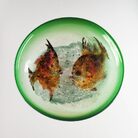 Dal 12 July 2025 al 24 November 2025
Venezia | Museo del Vetro
Dal 12 July 2025 al 24 November 2025
Venezia | Museo del Vetro
-
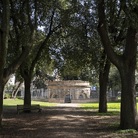 Dal 11 July 2025 al 21 September 2025
Roma | Loggia dei Vini - Villa Borghese
Dal 11 July 2025 al 21 September 2025
Roma | Loggia dei Vini - Villa Borghese
-
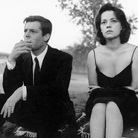 Dal 10 July 2025 al 10 August 2025
Roma | Palazzo Esposizioni Roma
Dal 10 July 2025 al 10 August 2025
Roma | Palazzo Esposizioni Roma
-
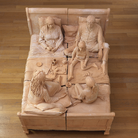 Dal 10 July 2025 al 3 November 2025
Casale Marittimo | Bolgheri, Castagneto Carducci, Casale Marittimo
Dal 10 July 2025 al 3 November 2025
Casale Marittimo | Bolgheri, Castagneto Carducci, Casale Marittimo
-
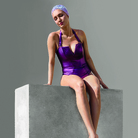 Dal 4 July 2025 al 21 September 2025
Roma | Palazzo Bonaparte
Dal 4 July 2025 al 21 September 2025
Roma | Palazzo Bonaparte
-
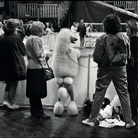 Dal 28 June 2025 al 21 September 2025
Roma | Palazzo Bonaparte
Dal 28 June 2025 al 21 September 2025
Roma | Palazzo Bonaparte
